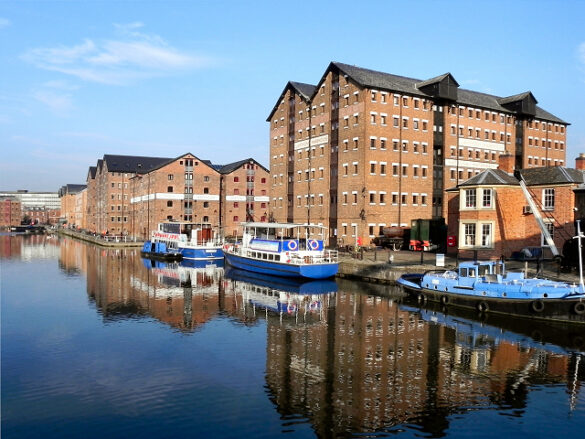Nestled on the banks of the River Severn, Gloucester Docks stand as a striking testament to the city’s rich industrial and maritime heritage. Once a bustling hub for trade and shipbuilding, today the docks have been transformed into a vibrant cultural and leisure destination, blending history, architecture, and modern amenities. With museums, shops, restaurants, and historic vessels, Gloucester Docks offer a fascinating journey through time, making it a must-visit location for history enthusiasts, families, and tourists.
The docks played a crucial role in the economic development of Gloucester and the surrounding Gloucestershire region, facilitating trade from the medieval period to the industrial revolution. Today, they are a symbol of successful urban regeneration, demonstrating how historical spaces can be revitalised while retaining their unique character.
A Historical Overview
The origins of Gloucester Docks date back to the 13th century, when the River Severn was already a vital trade route connecting the city to the Bristol Channel and the wider world. However, it was not until the 19th century, with the construction of the Gloucester and Sharpness Canal and the development of wet docks, that the area became a fully-fledged commercial port. Completed in 1827, the docks were designed to accommodate large ocean-going vessels, allowing the city to expand its trade significantly.
At its height, Gloucester Docks handled goods such as timber, coal, grain, and manufactured products. The docks became a hive of activity, with merchants, sailors, dockworkers, and craftsmen contributing to a bustling maritime economy. Ships from across the world would dock here, bringing exotic goods and fostering cultural exchanges that enriched the city.
The industrial boom of the 19th century transformed Gloucester into one of the most important inland ports in England. Warehouses, mills, and shipyards lined the quays, and the city’s prosperity was closely linked to the docks. The architecture from this period still survives, with many warehouses converted into residential, commercial, and leisure spaces, giving visitors a glimpse of Gloucester’s industrial past.
Architectural Heritage
Gloucester Docks is renowned for its 19th-century warehouse architecture, which is among the best-preserved in Britain. These brick buildings, often with distinctive arched windows and loading bays, evoke the industrial age while providing a unique aesthetic appeal. Many have been repurposed into shops, galleries, restaurants, and apartments, striking a balance between preservation and modern use.
Key architectural highlights include:
- The Canal Basin: A central hub connecting the docks to the Gloucester and Sharpness Canal. The basin was essential for transporting goods inland and features beautifully restored quaysides and ironwork.
- The Gloucester Railway Carriage and Wagon Company Buildings: Nearby structures that once supported rail transport linked to the docks.
- Historic Warehouse Conversions: Modern uses include cafes, offices, and artisan studios, demonstrating adaptive reuse without erasing history.
Walking along the quays, visitors can admire both the functional design of the warehouses and the aesthetic charm of the brickwork, arches, and cobblestone paths. Many of the buildings are Grade II listed, preserving the character and significance of the area for future generations.
Cultural and Leisure Attractions
Today, Gloucester Docks are more than a historical site—they are a lively cultural and leisure destination. Visitors can explore museums, enjoy boat trips, dine at waterside restaurants, or shop for unique gifts in boutique stores. Among the key attractions are:
Gloucester Waterways Museum
Housed in a historic warehouse, the Gloucester Waterways Museum tells the story of the city’s canals, docks, and inland waterways. Exhibits include canal boats, engines, tools, and memorabilia, bringing the industrial and maritime heritage to life. Interactive displays and restored vessels allow visitors to experience the history of transport, trade, and life on the water.

